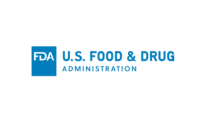Reduction of Salmonella Enteritidis (SE) in eggs has been a focus of the egg industry, consumer groups, research scientists and the federal government for the last decade. This focus has resulted in a call from industry representatives and consumer groups for a mandatory set of national standards designed to reduce SE in eggs. This article identifies federal agency involvement in the regulation of eggs, as well as the current and future egg safety activities of the U.S. Food and Drug Administration (FDA).
Federal authority to regulate egg safety is shared by the FDA and the U.S. Department of Agriculture’s Food Safety and Inspection Service (USDA FSIS). In addition, USDA’s Animal and Plant Health Inspection Service (APHIS) conducts a control program that certifies poultry breeding stock and hatcheries as SE-free and USDA’s Agricultural Marketing Service (AMS) conducts a surveillance program to ensure proper disposition of restricted shell eggs (i.e., eggs that cannot be marketed as table eggs).
FDA has jurisdiction over the safety of most foods, including shell eggs, under the Federal Food, Drug and Cosmetic Act. Under the Public Health Service Act, FDA also has the authority to prevent the spread of communicable diseases, including the authority to regulate foods when the foods may act as a vector of disease, as in the case of eggs containing SE. USDA has responsibility for implementing the Egg Products Inspection Act (EPIA). Under EPIA, FSIS has primary responsibility for the inspection of processed egg products to prevent the distribution of adulterated or misbranded liquid, frozen and dried egg products.
Egg Safety Action Plan Overview
The Egg Safety Action Plan (ESAP) was created in 1999 for the purpose of reducing SE infections associated with eggs. An SE risk assessment, conducted by a team headed by USDA FSIS and including FDA, predicted that a multiple intervention strategy would lead to the greatest reductions in these infections. Two strategies were outlined in the ESAP, each designed to reduce egg-associated SE, with producers having a choice between the strategies. Strategy I focused on risk reduction at the farm level, along with associated packer/ processor controls, while Strategy II focused on risk reduction at the packer/processor level. To meet the goals set forth in the ESAP and to cover all aspects of the farm-to-table continuum both FDA and USDA FSIS plan to publish proposed rules outlining measures to be put in place to reduce egg-associated SE infections
In 2000, as part of the ESAP, FDA published a regulation that introduced refrigeration requirements at the retail level for shell eggs and that mandated a safe-handling label to appear on egg cartons. The refrigeration requirement became mandatory on June 4, 2001, and requires retail establishments, including supermarkets, restaurants, delicatessens, caterers, vending operations, hospitals, nursing home, and schools, to keep eggs refrigerated at 45F (7.2C) or lower. Studies have shown that refrigeration at or below this temperature can effectively prevent the multiplication of SE. Eggs that have been specifically processed to destroy all viable Salmonella are exempt from the refrigeration requirement.
The safe handling labeling requirement became effective on Sept. 4, 2001, and requires that shell egg cartons bear the following statement:
SAFE HANDLING INSTRUCTIONS
To prevent illness from bacteria: keep eggs refrigerated, cook eggs until yolks are firm, and cook foods containing eggs thoroughly.
The safe handling instructions are meant to remind consumers of simple steps they can take to protect themselves from foodborne illness. Like the refrigeration requirement, the safe handling statement is not required on cartons of eggs that have been processed to destroy all viable Salmonella.
Future Egg Safety Activities
FDA is committed to publishing proposed rules that will put measures in place to reduce SE in eggs. The FDA proposed rule has been delayed in part due to the urgency of publishing regulations to implement the Public Health Security and Bioterrorism Preparedness and Response Act of 2002. Understandably, these regulations are important to ensure the safety and security of the nation’s food supply. However, egg safety continues to be a high priority for FDA, which hopes to publish the egg safety proposed rule by the end of Fiscal Year 2004.
FDA plans to propose that egg producers implement an SE risk reduction plan, which may include components such as: purchasing chicks from SE-monitored breeders; using Salmonella-negative feed; implementing a biosecurity program and rodent and pest controls; cleaning and disinfecting poultry houses if houses or eggs are SE-positive; refrigerating eggs on the farm; and testing the environment for SE to verify the plan’s effectiveness.
Traceback investigations are also an important tool in the quest to reduce egg-associated SE infections. They are used to determine and document the distribution chain and source of eggs implicated in foodborne illness outbreaks. FDA responsibility to conduct these investigations began in 1995, with the first traceback being conducted in 1996. Timeliness and efficiency can significantly affect the success of any investigation. With this in mind, FDA’s Center for Food Safety and Applied Nutrition (CFSAN) is in the process of finalizing a standard protocol to be used by field personnel when investigating SE outbreaks.
In addition, FDA will be taking a proactive approach by increasing inspections conducted at the farm level in an effort to establish a knowledge base of good industry practices. FDA will also seek to identify and address gaps in SE research, since a solid scientific knowledge base is critical to the development of any SE risk reduction program. Finally, FDA will encourage states to adopt the safe egg handling and preparation provisions in FDA’s 2001 Food Code and to improve training strategies for FDA field, state and local officials.
Comparative Statistics
Eggs are a significant food item in the diet of most Americans. In 1999, Americans consumed an estimated 234 eggs per person. By 2002 that number had increased to approximately 255. This increase may be due, in part, to the variety of specialty eggs recently made available to consumers, such as organic eggs and those containing omega-3 fatty acids, as well as increased demand for egg products by commercial baking, confections and fast food industries. Consumption also may have increased because eggs are a staple food item of the low-carbohydrate, high-protein diets that many Americans are currently following. Egg production has increased to fill this demand. In 1999, annual egg production in the U.S. was reported to be 82.7 billion eggs, with 69.8 billion being used as table eggs. In contrast, 2003 annual egg production had increased to 87.2 billion, with 74.4 billion eggs being consumed in the form of table eggs.
The 1998 baseline values used to measure effectiveness of the ESAP were 1.9 SE cases per 100,000 persons, 5,900 SE clinical isolates and 45 SE outbreaks. In comparison, the most recent data available from the U.S. Centers for Disease Control and Prevention (CDC) for 2001 indicates approximately 1.7 SE cases per 100,000 persons, 6000 SE clinical isolates and 46 SE outbreaks. Because the refrigeration and labeling requirements did not go into effect until mid-2001, these numbers do not reflect the potential impact we expect to see as a result of their implementation. Future reports will offer a better gauge as to the effectiveness of these regulations.
Conclusions
Delays in publication of the proposed egg safety rule should not be construed as a change in priority of egg safety by the FDA. The continued growth of the egg industry, as illustrated by a 20-egg increase in per capita consumption over a four-year period and a 4.5 billion-egg increase in production of table eggs, ensures that egg safety will remain a top priority for both FDA and egg producers. Implementation of the egg labeling and refrigeration requirements represented a substantial step toward realizing the final goal of reducing, to the furthest extent possible, SE infections associated with eggs. Already encouraging is the fact that despite a 15% increase in egg production over the past four years, there has been no increase in incidence of SE from eggs.
Publication of the proposed rule by FDA, a proactive approach to farm inspections, improvements in conducting traceback investigations coupled with novel research, potential state adoption of the 2001 Food Code, and improved egg safety training at all levels will substantially facilitate achievement of the goals set forth in the ESAP.
Read the sidebar "Eggs-cellent Animal Care Pays"
Gerardo Ramirez, Ph.D., is a staff fellow at FDA’s Center for Food Safety and Applied Nutrition. Ramirez is a member of the Division of Dairy and Egg Safety in the Office of Plant and Dairy Foods and is an expert on poultry science with research experience in the area of Salmonella infection in poultry.
FSM readers may visit www.fda.gov/Food/ for updated information on egg safety and the proposed rule.
Further Reading
1. Chickens and Eggs 1999 Summary. January 2000. http://jan.mannlib.cornell.edu/ reports/nassr/poultry/pec-bbl/lyegan00.pdf.
2. Chickens and Eggs 2003 Summary. January 2004. http://jan.mannlib.cornell.edu/ reports/nassr/poultry/pec-bbl/lyegan04.pdf.
3. FDA Finalizes Safe Handling Labels and Refrigeration Requirements for Marketing Shell Eggs. Nov. 30, 2000. www.foodsafety.gov/~dms/fs-toc.html.
4. Food Labeling: Safe Handling Statements, Labeling of Shell Eggs; Refrigeration of Shell Eggs Held for Retail Distribution, Small Entity Compliance Guide. www.cfsan.fda.gov/~dms /eggsguid.html.
5. Poultry Year in Review 2002. www.ers.usda.gov/publications/Idp/May03/PoultryAnnualSummary.pdf.
6. Salmonella Annual Survey 2002. www.cdc.gov/ncidod/dbmd/phlisdata/Salmtab/2002/SalmonellaAnnualSummary2002.pdf.
7. Surveillance for Outbreaks of Salmonella Serotype Enteritidis: Summary of 2001 Data. www.cdc.gov/ncidod/dbmd/diseaseinfo/salment_a.htm.
A recent study on behalf of the United Egg Producers found that three out of four American consumers will choose food products certified as protecting animal care over those that are not (www.unitedegg.com). The study also revealed that they are willing to make that choice in favor of animal care even if those products might cost more.
The survey showed that 77% of consumers would consider switching brands to an Animal Care Certified product if their usual brand were not certified as protective of animal care. The research found that 54% of consumers would be willing to spend five to 10% more for these products, and an additional 10% would be receptive to paying 15-20% more for products care-certified.
“These results are encouraging to the egg industry, as well as all industries faced with animal welfare issues,” said Gene Gregory, senior vice president of the United Egg Producers. “The Animal Care Certified standards have required significant commitment by our members, and it is rewarding to see that these efforts are paying off in grocers’ egg cases across the country.”
The consumer survey lends support to programs like the Animal Care Certified program, adopted by the U.S. egg industry two years ago. Under that program, egg farmers who meet strict guidelines that ensure responsible animal care for modern-day egg production are awarded the Animal Care Certified logo, which can be displayed on their egg cartons for consumers to see. Currently, 85% of U.S eggs are produced under these guidelines.
The guidelines were established by an independent scientific committee for the United Egg Producers and are supported by the U.S. Department of Agriculture, the Food Marketing Institute and the National Council of Chain Restaurants. These guidelines ensure that hens have sufficient space, continuous access to fresh air and water, sufficient and nutritious food, are kept clean, are protected from other hens, are transported in a safe and protected manner, and their overall welfare is promoted to the best of the farmer’s ability. Independent inspectors, most of them U.S. Department of Agriculture personnel, audit adherence to these guidelines.
Research also shows consumers are supportive of voluntary programs led by industry groups. A full 66% of consumers questioned in this survey indicated they believe animal care needs can be met with voluntary industry guidelines that are independently monitored.




